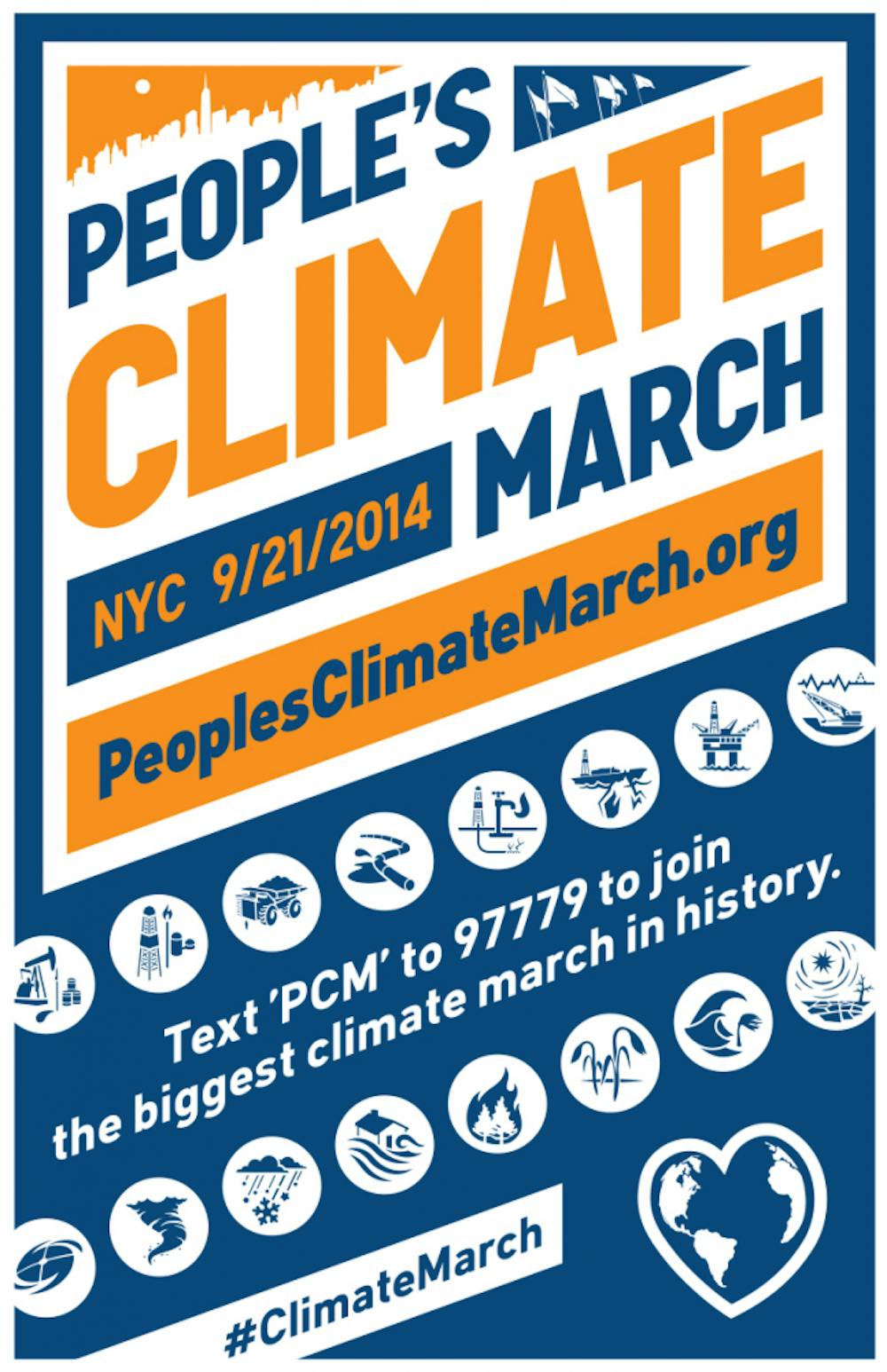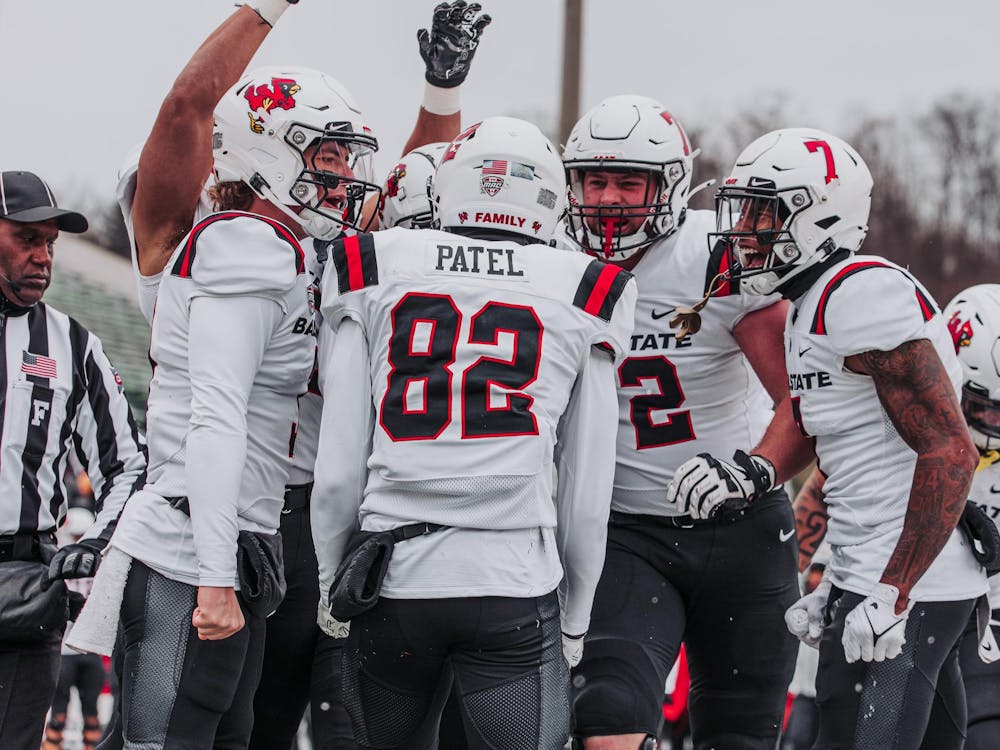The six main messages of the march:
The march is segmented into six blocs; each bloc will convey a certain message. This structure makes sure the intended overall message of the march isn’t muddled.
1. “Frontlines of crisis, forefront of change”
People first and most threatened by climate change, indigenous people, environmental justice and other threatened communities, will lead the march.
2. “We can build the future”
Labor, Families, Students, Elders and others will follow second on the message that everyone’s future is at risk.
3. “We have solutions”
Renewable Energy, Food and Water Justice and Environmental Organizations.
4. “We know who is responsible”
This group is focused on calling out “those who are holding back progress.”
5. “The debate is over”
Scientists, interfaith and other individuals will deliver the message that the facts are in and “taking action is a moral necessity.”
6. “To change everything, we need everyone”
The last bloc of the march will feature representation from across the U.S., LGBTQ, New York City Boroughs, neighborhoods, cities, states and countries.
Other events around the country on Sunday:
The border between Vancouver and Seattle will feature a rally where people will link hands across international borders. The message is to show “climate change knows no borders.”
Organizers in Berlin have created a silent parade, a stream of cyclists and a march for children ending at the Brandenburg gate.
A march in Colombia’s capital, Bogota, is expected to draw about 10,000 people calling for action.
Soures: peoplesclimate.org
Along with more than 100,000 Americans from across the country, Ball State students will march for climate change on Sunday.
The People’s Climate March in New York City aims to be the first and largest climate march in history, Lindsay Meinman, media associate for the People’s March, said. Their goal is to attract the attention of more than 120 world leaders attending a U.N. Climate Summit on Sept. 23.
“There is this documentary called ‘Disruption’ and it basically gives the call to action for this march,” said Faye Lichtsinn, a junior anthropology and natural resources and environmental management major and a student attending the march. “It gives the background information for climate change and the inaction of the [political] side of climate change in how we have signed treaties, but they aren’t being enforced, particularly in the U.S.”
The purpose of the Climate Summit, which the march is centered on, is for world leaders to come up for an agenda for next year’s global climate resolution. The U.N. 2015 climate resolution will dictate how countries will work together to combat the changing climate.
The reason for a two-day difference between when the march happens and when the summit happens is to make sure world leaders know about the people’s voice before they go into meetings on the 23rd, John Vann, director of the sustainability minor at Ball State, said.
There will be five students leaving at 9 p.m. Saturday. However, if more room becomes available, there are 11 more students on a waiting list.
The bus ride is free and the lodging is provided through donations from students and faculty such as, Vann, Carolyn Vann, a biology professor, and David Concepcion, chairperson of the department of philosophy and religious studies.
The New York march begins at 11:30 a.m. and will last all day, featuring speeches and more than 20 musical acts. The march itself is broken up into six blocs based on the various beliefs of people attending in an effort to clearly show the different messages of the march.
As part of the march, the students will travel along Central Park West, past the Rockefeller Center, Times Square and the New York City Port Authority.
Derek Tepe, a junior natural resources and environmental management major, wasn’t sure he was going to go at first, until he found out the cost of the trip was covered.
“It’s a very historic opportunity because you look at the big movements of the best and it’s like this could be very big,” Tepe said. “If I have the chance to be a part of it, I should take it.”
While there is a small number of Ball State students going to New York City, there will also be a rally on the grounds from noon to 2 p.m. Sunday at the Riverside United Methodist Church on Wheeling Avenue.
Vann, one of the organizers of the Muncie rally, expects to see about 200 people there. Events like the one in Muncie will take place around the country and world.
“We are going to try get local attention, but we’re really showing support for the folks who went to New York City,” John Vann said. “These kinds of satellite rallies are being held all across the United States.”
Tepe hopes to come out of this with more than just a greater drive for change.
“It’s interesting how when something taps into that emotional thread through all people what can be done... What happens when you get 100,000 people like that in one spot? I don’t think I’ve seen 100,000 people in one place,” he said. “The amount of energy just geared to this one thing is just going to be completely unreal.”





